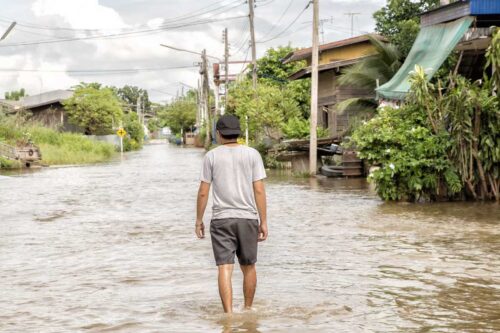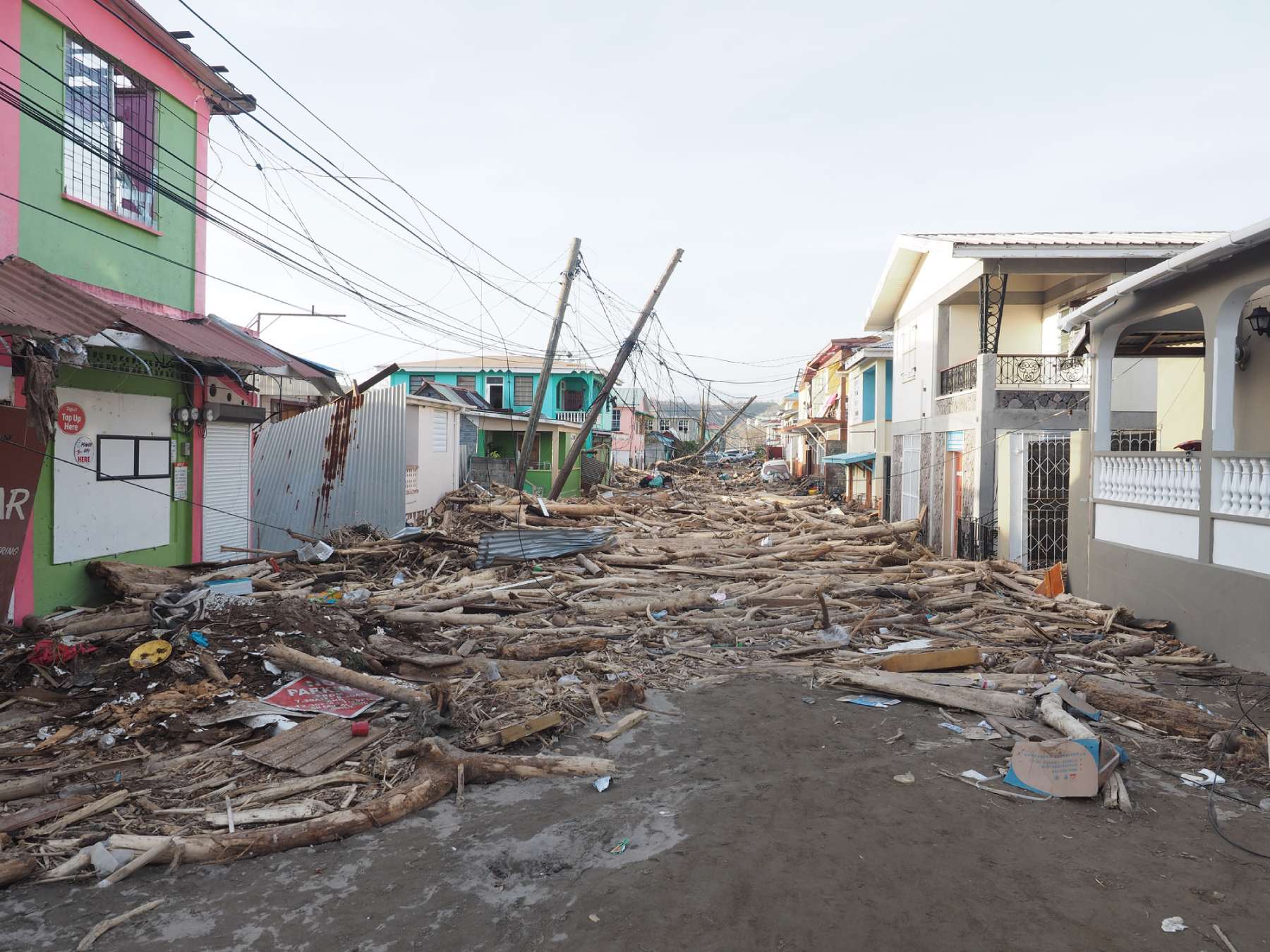
Up to Our Necks in Water
Voices from the Global South Explain What They Need from COP26
From more intense hurricanes to the danger that sea level rise will inundate entire communities, climate change is an existential threat to islands around the world. And since this has been clear for a long time, in 2009, as part of COP16—the United Nations climate change conference—developed countries committed to mobilizing $100 billion per year in climate finance by 2020 to vulnerable nations. But despite recent increases in pledges, that money has not materialized.
Perhaps even worse, the financing that is available has been extremely difficult to access. And this creates a painful contrast to these nation’s needs. This funding could not only help ensure the survival of island nations but will also put those countries on a sustainable development path that can be a model for countries around the world.
“Building resilience in island nations offers the framework for building resilience and equity in global communities,” said David Gumbs, principal in RMI’s Global South program, in a recent RMI webinar. Gumbs moderated this webinar, Voices of the Global South, which brought together energy experts from island nations throughout the Caribbean.

The main question the speakers addressed was: how can the Global North seize the opportunity at the upcoming COP26 to not only deliver on the promised $100 billion, but also make access to finance and resources easier for vulnerable nations?
The Importance of Island Nations and 1.5°C
Caribbean islands produce less than 0.002 percent of global greenhouse gases, yet they are bearing the brunt of the impacts of climate change. And even though they are minuscule contributors of emissions, they are playing their part in reducing their carbon footprint. It not only makes environmental sense, but it also makes economic sense.
“Moving away from fossil fuels does not only allow us to take the moral high ground,” said presenter Dr. James Fletcher, founder and managing director of sustainable energy consulting company Solaricon. “We will also be making all of our economic sectors more competitive. We’ll be allowing the citizens of our countries to keep their money in their pockets because we’re paying too much for electricity right now.”
Dr. Fletcher is also the former minister of public service, sustainable development, energy, science and technology in Saint Lucia. He was instrumental in negotiating a 1.5°C target in the Paris Agreement. And while 1.5°C is definitely better than the 2°C target originally proposed, it is not a panacea; island nations will still suffer.
“Even at 1.5°C of warming Small Island Developing States (SIDS) have exponentially higher per capita climate risk,” said presenter Lia Nicholson, climate advisor with the Alliance of Small Island States, Permanent Mission of Antigua and Barbuda to the United Nations. “Already, under 1.2°C, some islands are losing 200 percent of GDP in one hurricane, which is devastating future generations and sustainable development.”

This underscores the critical need to transform energy systems. Updating the electric grid in these regions with clean, renewable distributed energy resources is crucial. As the renewable energy manager of Fundación Comunitaria de Puerto Rico, Hiram Williams, explained in the webinar, “An obsolete and fragile energy grid can hinder recovery and adaption to climate change. And most of those who will bear the brunt of the outcomes and be disproportionately affected will be underserved and hard to reach rural island communities.”
Nicholson agrees. “There is no question that our ambition as small island developing states is there. We need equity and access so that none of our communities are left behind, even in a 1.5°C world,” she said. RMI believes that inequity is the biggest risk to the energy transition. To that effect, we are releasing a report for policymakers, regulators, and utility executives next month on how to ensure an equitable energy transition. We believe that the Caribbean can be a model for a resilient and just energy future.
The Urgent Need to Mobilize Finance
Island nations know what they need to do. And they have the will and ambition to do it. What they lack is the resources. “We can put all of our countries on a path to sustainable development by making the investments in our infrastructure, in our social services, in our environment,” says Dr. Fletcher. “But it will require resolute and urgent action by the international community and a significant mobilization of finance.”
The difficulty in accessing climate finance is not because there is no financing available. It’s not even because of the lack of the promised $100 billion. According to Laetitia De Marez, director the Climate Finance Access Network (CFAN), “the message that we get from colleagues and friends in SIDS is that the system for accessing climate finance has become highly complex, onerous, and extremely slow.”
CFAN grew out of the need to overcome those barriers. CFAN supports developing countries in securing and structuring finance for climate investments. “We cannot achieve 1.5°C and we cannot reduce vulnerability of island nations without transferring the knowledge and growing local capacity,” said De Marez.
To build that capacity, CFAN trains a network of local climate finance advisors, and provides ongoing technical support to those advisors. The first group of advisors, eight people from the Pacific region, will be announced at COP26. The goal is to deploy 30 advisors across the Pacific, Africa, and the Caribbean by the end of 2022, and 50 by the end of 2023.
But De Marez also emphasized that much more needs to happen at COP26. This includes pushing rich nations to deliver on the $100 billion promise, pushing bilateral and multilateral funding mechanisms to fast-track access to climate finance for SIDS, and investing in local capacity development
Puerto Rico also has difficulties accessing finance. As part of the United States, it can’t access most international finance. To address that, Hiram Williams of Fundación Comunitaria presented the Puerto Rico Community Energy Resilience Fund (CERF), part of the Community Energy Resilience Initiative (CERI). CERI’s goal is to advance access to reliable and renewable energy for low-to-moderate income communities, including local non-profits and small businesses. Access to finance is a critical part of that. CERF will provide critical facilities with concessionary capital to make systems more affordable and make financing viable.
A Pivotal Moment
Many see COP26 as a pivotal moment in the fight against climate change. And SIDS and other vulnerable nations see it as one of the last chances we have to save lives. “We ourselves are making a tremendous sacrifice to get there, risking our health,” says Lia Nicholson. “Some islands are COVID free and risk bringing it back. Some islands are going to travel days and days and are actually going to have to charter separate planes to get to COP. But we will get there, in as many numbers as we can, and we expect a return on our effort and the health risks we are taking on.”
That means the international community needs to step up and needs to do it now. “We’re up to our necks in water figuratively,” says Dr. Fletcher. “Very soon we’ll be up to our necks in water literally. So there’s a very small window of opportunity for us to act but it needs urgent and resolute action by the international community.”